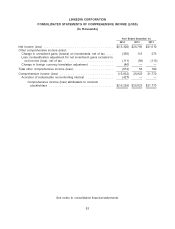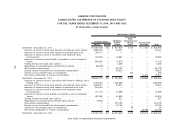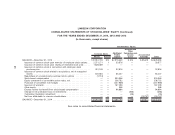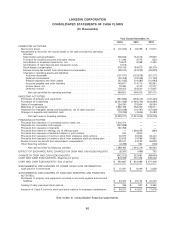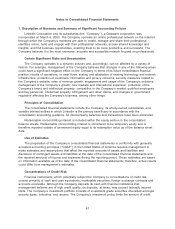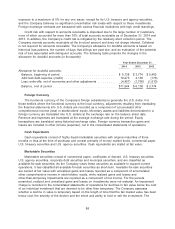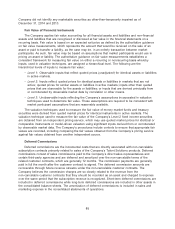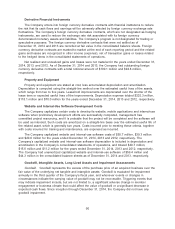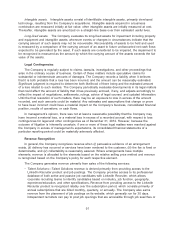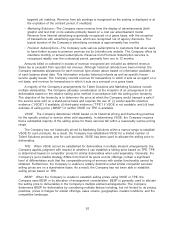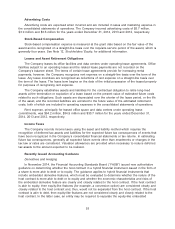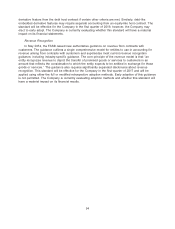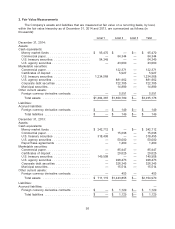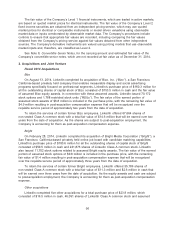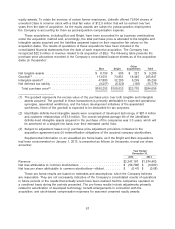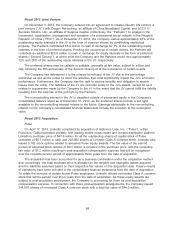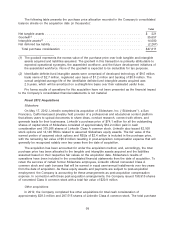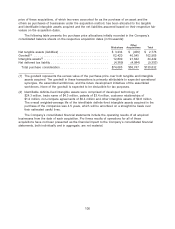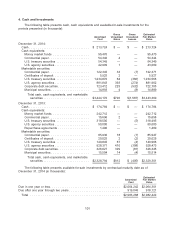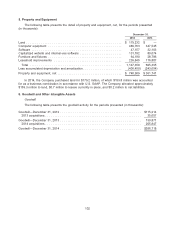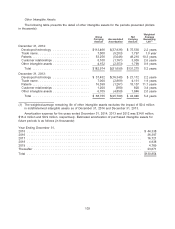LinkedIn 2014 Annual Report Download - page 95
Download and view the complete annual report
Please find page 95 of the 2014 LinkedIn annual report below. You can navigate through the pages in the report by either clicking on the pages listed below, or by using the keyword search tool below to find specific information within the annual report.Advertising Costs
Advertising costs are expensed when incurred and are included in sales and marketing expense in
the consolidated statements of operations. The Company incurred advertising costs of $5.7 million,
$3.9 million and $3.6 million for the years ended December 31, 2014, 2013 and 2012, respectively.
Stock-Based Compensation
Stock-based compensation expense is measured at the grant date based on the fair value of the
award and is recognized on a straight-line basis over the requisite service period of the award, which is
generally four years. See Note 12, Stockholders’ Equity, for additional information.
Leases and Asset Retirement Obligations
The Company leases its office facilities and data centers under operating lease agreements. Office
facilities subject to an operating lease and the related lease payments are not recorded on the
Company’s balance sheet. The terms of certain lease agreements provide for increasing rental
payments; however, the Company recognizes rent expense on a straight-line basis over the term of the
lease. Any lease incentives are recognized as reductions of rent expense on a straight-line basis over
the term of the lease. The lease term begins on the date of the initial possession of the leased property
for purposes of recognizing rent expense.
The Company establishes assets and liabilities for the contractual obligation to retire long-lived
assets at the termination or expiration of a lease based on the present value of estimated future costs
related to such obligations. Such assets are depreciated over the shorter of the lease period, or the life
of the asset, and the recorded liabilities are accreted to the future value of the estimated retirement
costs, both of which are included in operating expenses in the consolidated statements of operations.
Rent expense, principally for leased office space and data centers under operating lease
commitments, was $94.2 million, $54.9 million and $30.7 million for the years ended December 31,
2014, 2013 and 2012, respectively.
Income Taxes
The Company records income taxes using the asset and liability method which requires the
recognition of deferred tax assets and liabilities for the expected future tax consequences of events that
have been recognized in the Company’s consolidated financial statements or tax returns. In estimating
future tax consequences, generally all expected future events other than enactments or changes in the
tax law or rates are considered. Valuation allowances are provided when necessary to reduce deferred
tax assets to the amount expected to be realized.
Recently Issued Accounting Guidance
Derivatives and Hedging
In November 2014, the Financial Accounting Standards Board (‘‘FASB’’) issued new authoritative
guidance on determining whether the host contract in a hybrid financial instrument issued in the form of
a share is more akin to debt or to equity. The guidance applies to hybrid financial instruments that
include embedded derivative features, which must be evaluated to determine whether the nature of the
host contract is more akin to debt or to equity and whether the economic characteristics and risks of
the embedded derivative feature are clearly and closely related to the host contract. If the host contract
is akin to equity, then equity-like features (for example, a conversion option) are considered clearly and
closely related to the host contract and, thus, would not be separated from the host contract. If the host
contract is akin to debt, then equity-like features are not considered clearly and closely related to the
host contract. In the latter case, an entity may be required to separate the equity-like embedded
93


